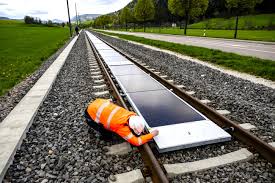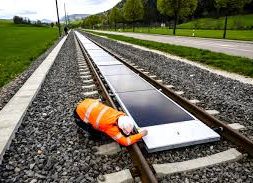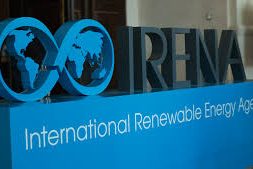
Banaras Locomotive Works Advances Green Energy with Solar Panel Installation on Railway Tracks – EQ
In Short : Banaras Locomotive Works (BLW) has installed solar panels on railway tracks, reinforcing its commitment to green energy. The initiative aims to reduce carbon emissions and promote renewable energy use in operations. By integrating solar power, BLW supports Indian Railways’ vision of becoming a net-zero carbon emitter by 2030, while ensuring sustainable and cost-effective energy solutions.
In Detail : Banaras Locomotive Works (BLW) has taken a significant step towards sustainability by installing solar panels along railway tracks. This green initiative aligns with India’s larger commitment to expand renewable energy adoption. The project will help reduce dependency on conventional power sources while making railway operations more eco-friendly and energy efficient in the long run.
The installation of solar panels on tracks highlights BLW’s proactive approach to environmental responsibility. Instead of limiting solar energy to rooftops or open land, the decision to utilize track areas maximizes available space. This innovative move reflects the growing emphasis on creative solutions for renewable integration.
Indian Railways has been working consistently to reduce its carbon footprint, and this project strengthens that goal. With BLW leading the way, solar energy can gradually power more operational needs. The approach represents a milestone in building a sustainable ecosystem within the railway sector.
One of the major benefits of this initiative is the reduction of carbon emissions. By replacing a portion of conventional energy with solar power, BLW can significantly lower greenhouse gas emissions. This transition ensures that operations remain aligned with global climate commitments.
The project also contributes to India’s ambition of achieving net-zero carbon emissions from Indian Railways by 2030. The integration of renewable energy into such large-scale infrastructure demonstrates how transport and energy sectors can converge for sustainable development. It sets an example for similar projects nationwide.
The initiative is also cost-effective, as solar power reduces long-term electricity expenses. While initial investment may be high, the benefits in terms of energy savings and reduced grid dependency outweigh costs. This financial efficiency complements environmental gains, creating a win-win model for sustainability.
BLW’s efforts highlight the role of technology and innovation in shaping India’s green journey. Solar installations on tracks showcase how existing infrastructure can be repurposed to meet renewable energy targets. This adaptability is crucial for scaling up clean energy adoption across different sectors.
The project has also garnered attention as an example of India’s push towards energy self-reliance. By tapping into locally available solar power, BLW contributes to the larger national mission of Atmanirbhar Bharat. It reinforces the importance of indigenous solutions for addressing energy challenges.
Looking ahead, similar models could be replicated in other railway zones to multiply the impact. If scaled effectively, solar track installations could power a significant portion of railway operations. This initiative by BLW is not just about clean energy—it is about redefining the role of infrastructure in driving sustainable progress.













